August 4, 2023, 7:08 am
In the fast-paced world of dental practices, efficient scheduling is crucial for providing top-notch patient care while maximizing operational effectiveness. Traditional scheduling methods often rely on manual input and can lead to inefficiencies, long waiting times, and overwhelmed staff. However, the advent of predictive scheduling has transformed the way dental practices manage their appointments. In this blog, we'll explore the remarkable power of predictive scheduling and how it can streamline your scheduling process for better patient experiences and optimized practice operations.
The Challenges of Dental Appointment Scheduling
Managing appointments in a dental practice can be a complex puzzle. Factors such as patient preferences, treatment durations, staff availability, and unforeseen emergencies all contribute to the scheduling challenge. Balancing these elements manually often leads to gaps, overlaps, and suboptimal allocation of resources.
Introducing Predictive Scheduling
Predictive scheduling leverages advanced technology and data analysis to forecast patient demand, optimize staff schedules, and enhance the patient experience. By harnessing historical data, patterns, and other relevant factors, predictive scheduling algorithms create smarter, more efficient schedules. Here's how predictive scheduling can revolutionize your dental practice:
-
Accurate Demand Forecasting: Predictive scheduling uses historical data and trends to anticipate patient demand, allowing you to allocate appointments more accurately and prevent overbooking or underbooking.
-
Efficient Staff Allocation: By analyzing staff availability, skills, and treatment times, predictive scheduling ensures the right staff members are assigned to specific appointments, optimizing efficiency and patient care.
-
Reduced Wait Times: Smart scheduling minimizes patient wait times by spacing appointments appropriately and allocating resources efficiently, leading to improved patient satisfaction.
-
Emergency Management: Predictive scheduling can adapt to unexpected emergencies or last-minute changes, ensuring that patient care remains uninterrupted.
-
Resource Optimization: Optimal scheduling helps maximize the utilization of equipment and facilities, preventing bottlenecks and enhancing operational efficiency.
-
Staff Well-Being: By eliminating scheduling-related stress and chaos, predictive scheduling contributes to a more balanced and satisfied dental team.
Implementing Predictive Scheduling in Your Dental Practice
To harness the power of predictive scheduling, follow these steps:
-
Data Collection: Gather historical appointment data, staff availability, treatment durations, and other relevant metrics.
-
Choose a Tool: Invest in scheduling software that offers predictive scheduling capabilities. Look for features such as demand forecasting and real-time updates.
-
Algorithm Configuration: Set up the scheduling algorithms based on your practice's specific needs and priorities.
-
Integration: Ensure the software integrates seamlessly with your practice management system and other tools.
-
Staff Training: Train your team on how to use the predictive scheduling system effectively, including making adjustments when needed.
-
Feedback and Optimization: Regularly review and refine the scheduling algorithms based on feedback and changing practice dynamics.
Predictive scheduling is a game-changer for dental practices seeking to optimize their operations and elevate patient experiences. By leveraging data-driven insights and advanced algorithms, predictive scheduling streamlines appointment management, enhances staff productivity, reduces wait times, and ultimately leads to improved patient care. Embrace the power of predictive scheduling to transform your dental practice into a well-oiled, patient-centered machine that delivers exceptional care with precision and efficiency.
